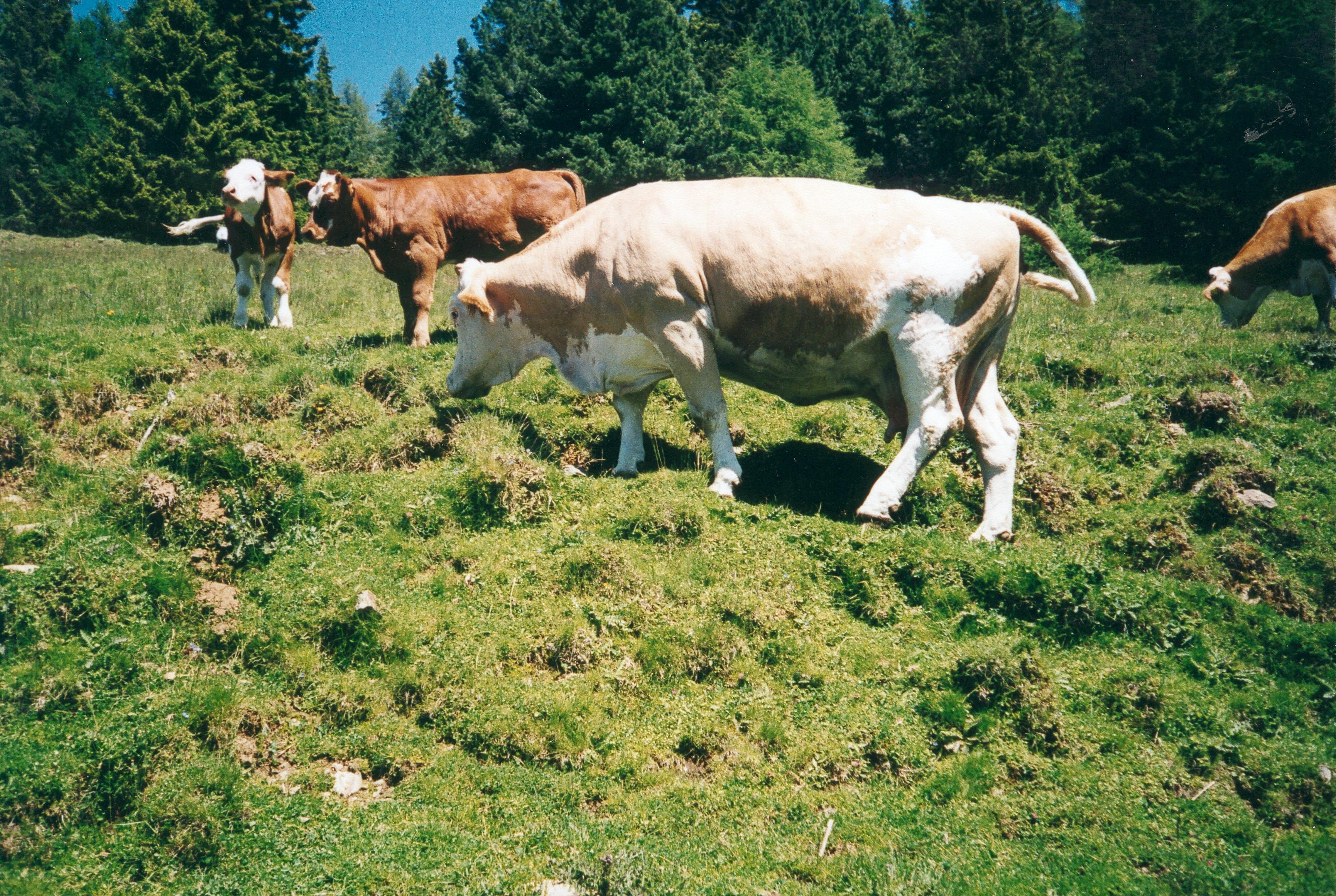Alpine pastures are ecologically very sensitive locations. They have a special value for the environment, tourism, nature conservation and ecology. Sustainable alpine farming makes the best possible use of the location-specific feed availability. Through pasture management, the farmer significantly controls vegetation development and yield.
The digestibility and nutrient content of alpine grassland forage are usually at a lower level (4 to 5.5 MJ NEL/kg DM) than on valley pastures. Energy contents above 5.5 MJ NEL/kg DM can only be achieved at the beginning of alpine pastures (with early upwelling) or on carefully managed ridge grass meadows (favorable locations). The feed yield and daily feed increase are significantly limited. On alpine pastures, animals spend more time looking for food. In high-performing animals, feed and nutrient intake can suffer due to a lack of grazing time. Especially from the end of July onwards, the increase in feed output on the alpine pastures drops significantly. Pasture management must therefore be designed in such a way that the animal population is matched to the animals' feed requirements or the area size is tailored to the animal population. On alpine pastures you will mainly find paddock and extensive grazing systems.
Important alpine pasture rules:
- Preparing the alpine pasture animals for grazing in the valley
- Early start to alpine pastures
- If possible, graze favored areas first
- If possible, carry out coupling and rotational grazing
- Adjust the paddock bumping duration to the food supply
- Create paddocks large enough so that they will not be grazed continuously for more than a week
- Through pasture management and the position of drinking troughs and feeding places, emphasize good distribution of animals on the pasture areas (better distribution of feces and urine, more even use of feed and population development)
- Reduction of animal population in late summer
- Targeted control of the calving phase on the farm (e.g. calving of suckler cows in October - raising the dry cows)
- Higher performing animal groups graze the favored areas
- Grazing on high alpine pastures in July - migration down the valley in late summer
- Timely autumn harvest
- Supplementary feeding of hay or silage after lifting and before drifting






